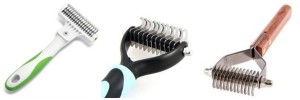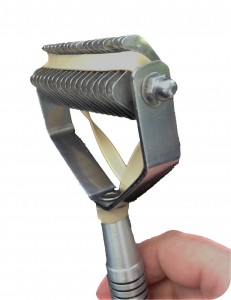Professional stress and burnout is the number one thing that stops a successful career in its tracks. So how do you keep it  from happening? How do you keep your job fresh? Fun? Rewarding?
from happening? How do you keep your job fresh? Fun? Rewarding?
Here are a few of my top suggestions.
Difficult Dogs
Dealing with difficult dogs or cats is one of the biggest challenges we face every day. You know the feeling in your gut when you see them on your appointment book. Those feelings of dread, anger, and sometimes fear – those negative emotions that get associated with one pet or client. You begin fretting about them right away, don’t you?
I don’t know many people who enjoy dealing with an uncooperative pet. One of the easiest ways to minimize your stress level is to simply eliminate them from your schedule.
There are plenty of nice, well-behaved dogs in the world to groom. I strongly suggest not doing any more than you can handle confidently and safely. Your skill level should dictate how much you can comfortably take on. Typically, the more experience you have, the more challenging the pet you can safely handle. To stay safe, know your limits – and the limits of the pet entrusted to you.
 Here is the rating scale I’ve used to rate a dog’s (or cat’s) personality.
Here is the rating scale I’ve used to rate a dog’s (or cat’s) personality.
#1: Perfect angel on the grooming table. We love these pets!
#2: Bouncy and wiggly. Does not respect rules and boundaries but is not mean or nasty. They are a bit of a handful to deal with on the grooming table.
#3: Will bite when provoked (tugging on mats, cleaning ears, and trimming nails). With the exception of these trigger points, the pet can tolerate the rest of the grooming process.
#4: Will bite – even the smallest thing sets this personality type off. They cannot be trusted. A well-fitted muzzle can be helpful – and many times, necessary. They require a seasoned and experienced handler/groomer to keep both the pet and the person safe.
#5: Dangerous and unpredictable. Eyes will typically glow red or green. Good candidate for veterinarian-supervised grooming with a sedative.
You should consider charging extra for handling difficult pets. They take more time to groom – and time is money. Let your fee reflect it.
Difficult owners
 This one can be a little tricky. If they are just mildly annoying, deal with it professionally but don’t put any more effort into the client than needed to keep them at bay. If they are rude and nasty, most likely they are just that way all the time – that’s how they go through life. I would do a great job for them, just like with any other client, but I would not go out of my way to do anything “special.”
This one can be a little tricky. If they are just mildly annoying, deal with it professionally but don’t put any more effort into the client than needed to keep them at bay. If they are rude and nasty, most likely they are just that way all the time – that’s how they go through life. I would do a great job for them, just like with any other client, but I would not go out of my way to do anything “special.”
If they are difficult to deal with AND neglect their pooch or do not respect my time, I would charge extra for that.
Just as we rate our dogs, at times we will rate difficult owners.
I have no problem referring #4 or #5 rated pets and/or owners to another groomer who might be more successful in meeting their needs (i.e. – always fire them professionally and politely).
Lateness
Nothing is more frustrating than a client who does not respect our time! We give them a 15-minute window to arrive, either to arrive to their scheduled appointment or to pick up their pet. If they do not arrive within that window, it counts as a strike against them. For arrivals, we have a three strike rule…
-
 Strike one: we let them off with a mild warning.
Strike one: we let them off with a mild warning. - Strike two: we remind them how much we value our time. If they can’t value it as well, they will need to look for another stylist.
- Strike three: we fire them.
If they do not pick up their pet prior to our posted closing times, we give a few extra minutes. As soon as we know they are running late, we try to get in touch with the owner. If the owner calls and can give us a reasonable estimated pick-up time, my staff has the option of waiting for them if it’s beyond closing time. I will post a hefty late pick-up fee (in 5-minute intervals) but leave it up to the employee to charge it. If they waited, they get to keep the entire late pick up fee as long as they collect it. If we can’t reach them or have not heard from them, we’ll bed the pet down for the night. We leave a pleasant note on the door for the client. We simply state our hours and let them know we look forward to seeing them in the morning. I have heard many salons charge an overnight fee, too.
5 More Quick Suggestions
Each one of these could be a blog topic on its own. However, for right now, I’ll just toss these out there for you to ponder.
- Keep learning to make your career interesting while allowing you to expand your career opportunities.
- Take time for yourself and your family.
- Maintain physical health and wellness through diet and exercise.
- Learn to say NO when your schedule becomes overwhelming.
- Charge enough for your services. Avoiding living paycheck-to-paycheck.
Don’t forget the little things that made this career attractive to you in the first place – never forget WHY you followed this career path. This is a career with UNLIMITED potential for those willing to stay focused. Work hard – and never stop learning. How cool is that?
Happy Trimming!
~ Melissa
P.S.
Go online and tell us what you think on the Learn2GroomDogs Facebook page.


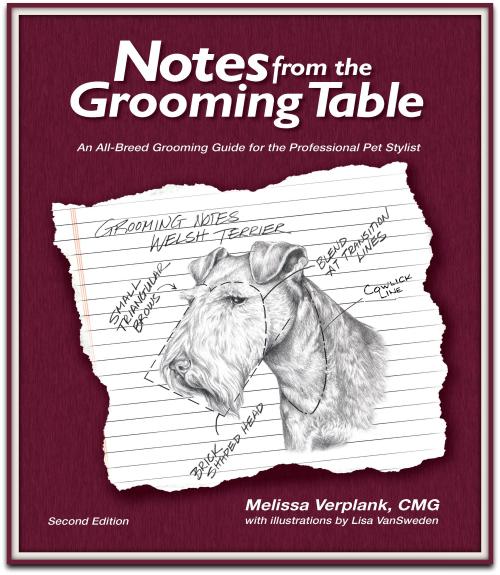
 “How do we handle that?’ I thought to myself at the end of a very long day. We were tossing color options around and having a hard time deciding. Then it hit me. The cover should be the color of a nice glass of red wine – something we were all going to be celebrating with once this massive project was finished!
“How do we handle that?’ I thought to myself at the end of a very long day. We were tossing color options around and having a hard time deciding. Then it hit me. The cover should be the color of a nice glass of red wine – something we were all going to be celebrating with once this massive project was finished!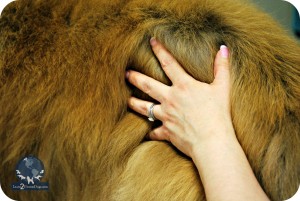




 Making attractive bows does require finesse. It takes a bit of time to learn. But once you figure out a method that works well for you, you will be limited only by your own creative spirit and time.
Making attractive bows does require finesse. It takes a bit of time to learn. But once you figure out a method that works well for you, you will be limited only by your own creative spirit and time. “I have a (insert breed here). Do you know how to groom them correctly?”
“I have a (insert breed here). Do you know how to groom them correctly?” The Internet is an invaluable research tool. Use it wisely. Most breeds will have a parent club that hosts an official site for the breed. Spend a few minutes reviewing images of top winning dogs in their galleries. With a little luck, you may even find grooming directions or links to grooming directions from dedicated breeders.
The Internet is an invaluable research tool. Use it wisely. Most breeds will have a parent club that hosts an official site for the breed. Spend a few minutes reviewing images of top winning dogs in their galleries. With a little luck, you may even find grooming directions or links to grooming directions from dedicated breeders.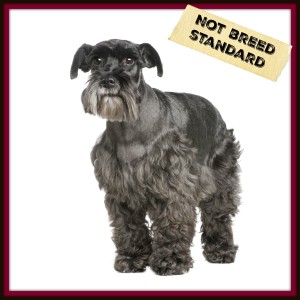
 As pet groomers and stylists, we get to see plenty of dogs. It’s rare and exciting to get a breed you are not familiar with. Most of us pros enjoy the challenge of learning about a new breed. Figuring out what we will need to do to make the dog look like it should – or could – look like if the owners allow you to groom it correctly.
As pet groomers and stylists, we get to see plenty of dogs. It’s rare and exciting to get a breed you are not familiar with. Most of us pros enjoy the challenge of learning about a new breed. Figuring out what we will need to do to make the dog look like it should – or could – look like if the owners allow you to groom it correctly.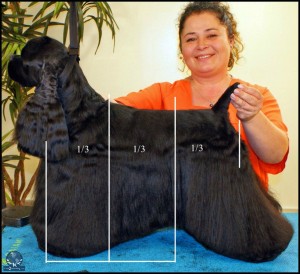


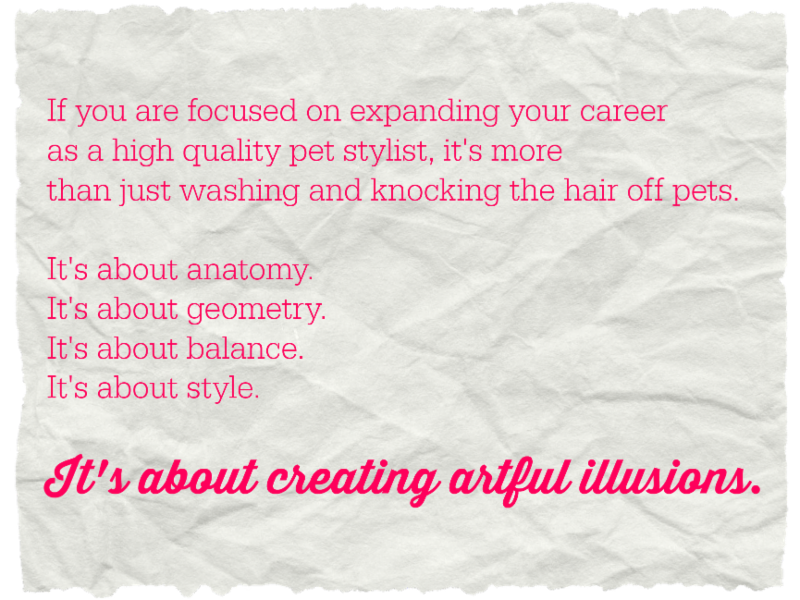 We had many more aha! moments while we watched Pina work her magic on these six lovely dogs. We will be releasing Pina’s latest L2GD video lessons all through 2016.
We had many more aha! moments while we watched Pina work her magic on these six lovely dogs. We will be releasing Pina’s latest L2GD video lessons all through 2016.
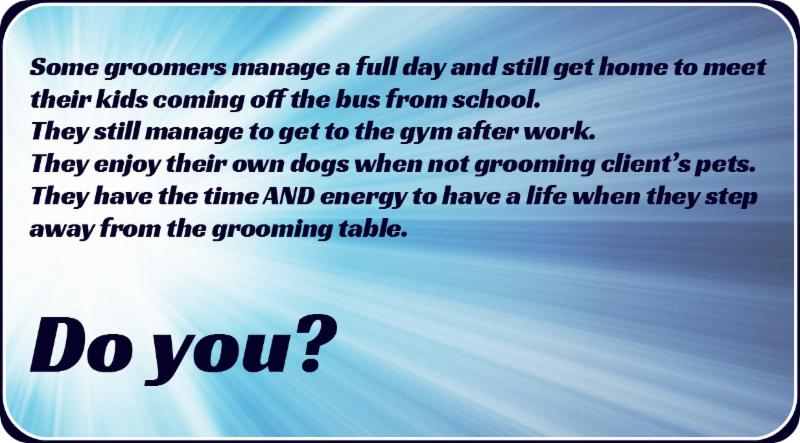 Generally speaking, the faster you can get a dog to the tub, the faster the trim will go. Dogs with six weeks or less coat growth can normally go straight to the tub. With today’s products, shampoos, conditioners, and high velocity dryers, much of the pre-work can be eliminated. Dematting or pre-trimming is a waste of time with six weeks or less trims.
Generally speaking, the faster you can get a dog to the tub, the faster the trim will go. Dogs with six weeks or less coat growth can normally go straight to the tub. With today’s products, shampoos, conditioners, and high velocity dryers, much of the pre-work can be eliminated. Dematting or pre-trimming is a waste of time with six weeks or less trims.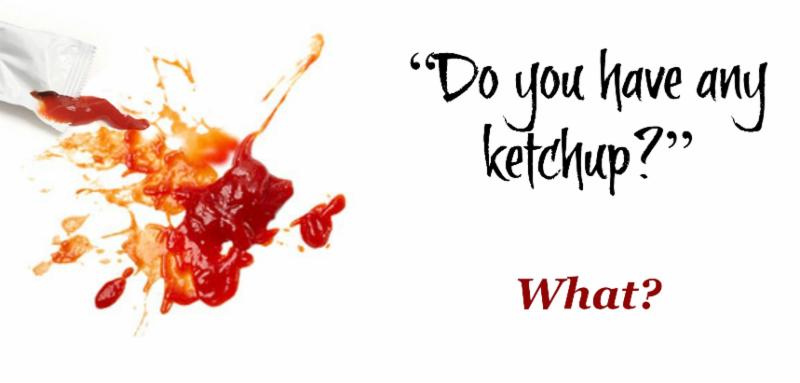 But how do you know exactly what to reach for when a unique situation presents itself? Sometimes you don’t always know what you need. Or maybe what you need is a specialty item and you don’t have it at your fingertips. What do you do then?
But how do you know exactly what to reach for when a unique situation presents itself? Sometimes you don’t always know what you need. Or maybe what you need is a specialty item and you don’t have it at your fingertips. What do you do then?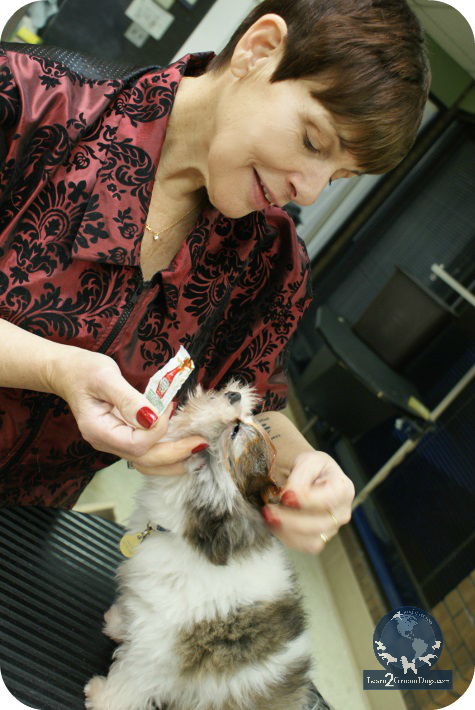 loving homes. The family supplying the dogs for the Learn2Groom film shoot had adopted three of the puppies. Many of the rescued pets were Shih Tzus, Pomeranians, Malteses, or mixes of the three breeds.
loving homes. The family supplying the dogs for the Learn2Groom film shoot had adopted three of the puppies. Many of the rescued pets were Shih Tzus, Pomeranians, Malteses, or mixes of the three breeds.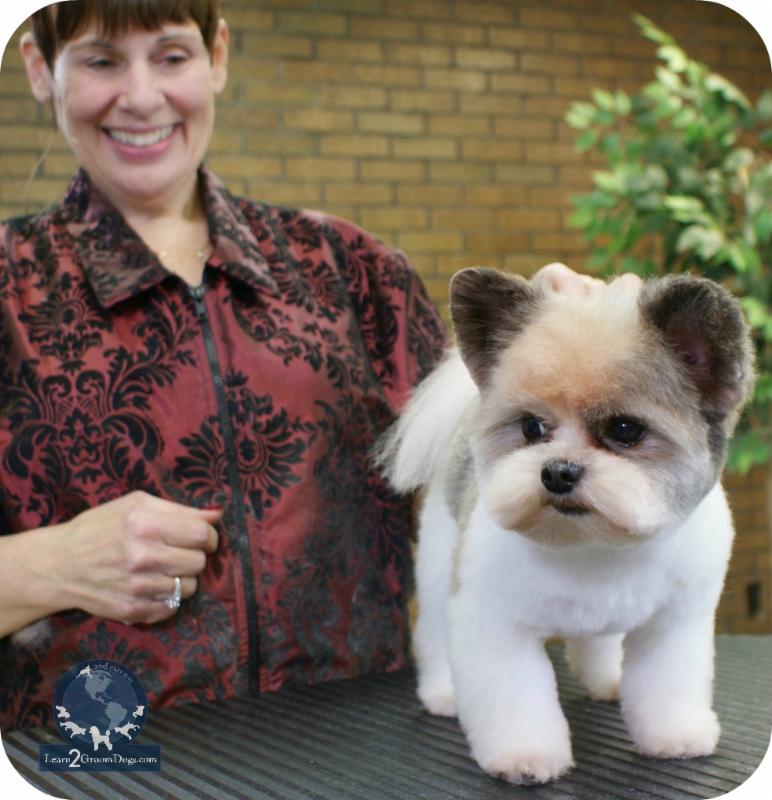 Sue suggested that we do a couple more applications in the future to really lighten the top of his head.
Sue suggested that we do a couple more applications in the future to really lighten the top of his head. 1. Step into the session with a very open mind.
1. Step into the session with a very open mind. As your knowledge and skills advance, the clinics won’t be as daunting. They will become a great way for you to fine-tune your skills. You can begin to network and exchange thoughts with others in the industry who can provide insight when you need it. Plus, these types of functions are a great way to invigorate your career.
As your knowledge and skills advance, the clinics won’t be as daunting. They will become a great way for you to fine-tune your skills. You can begin to network and exchange thoughts with others in the industry who can provide insight when you need it. Plus, these types of functions are a great way to invigorate your career.


